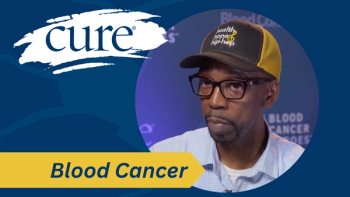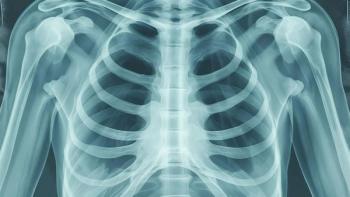
Zejula-Avastin Combo Improves Outcomes, With ‘No Impact on Quality of Life’ in High-Risk Ovarian Cancer
Zejula plus Avastin led to promising progression-free survival rates with no new side effects for patients with newly diagnosed, advanced ovarian cancer.
When given after one line of platinum-based chemotherapy, Zejula (niraparib) plus Avastin (bevacizumab) was shown to improve outcomes for patients with newly diagnosed, advanced ovarian cancer, according to findings from the phase 2 OVARIO study that was presented at the 2022 Society for Gynecologic Oncology (SGO) Annual Meeting on Women’s Cancer.
Dr. Melissa Hardesty added that the combination had a safety profile consistent with the known side effects of each treatment.
At the June 16, 2021, data cutoff point, patients who received the PARP inhibitor Zejula plus the vascular endothelial growth factor-A inhibitor Avastin (105 patients) achieved a median progression-free survival (PFS; the time from treatment until a patient’s disease progresses) of 19.6 months. Eighteen months after treatment, 62% of patients still were without disease progression, and at the 24-month mark, 53% of patients’ disease did not progress.
“OVARIO enrolled a high-risk population,” said Hardesty, a gynecologic oncologist with Alaska Women’s Cancer Care in Anchorage. “More than half of the patients remained progression-free at 24 months. Clinical benefit (by PFS) was observed in the overall population, and across biomarker subgroups in a continuum.”
Patients with high-grade serous or endometrioid stage 3b to 4 epithelial ovarian, fallopian tube or peritoneal cancer were enrolled onto the trial. Eligible patients achieved a complete response (CR; when there is no more detectable cancer after the treatment), partial response (PR; when cancer shrinks but does not completely disappear) or no evidence of disease (NED) result after treatment with front-line platinum-based chemotherapy plus Avastin.
Patients weighing less than 77 kg (169.8 pounds) and/or with a platelet count below 150,000 per µL (82 patients) received 200 mg of daily Zejula plus 15 mg/kg of Avastin once every three weeks. The 23 other patients who were 77 kg or heavier received 300 mg of Zejula each day plus Avastin at 15 mg/kg once every three weeks.
The main goal of the trial was PFS rate at 18 months. Secondary end points included median PFS, overall survival (OS), time to first therapy after the Zejula/Avastin combination and safety. The researchers also analyzed PFS rate at six and 12 months.
All patients underwent tissue testing for homologous recombination deficiency (HRD) at study enrollment. Prior research has shown the patients with HRD-positive disease may be more likely to benefit from certain types of treatments, including PARP inhibitors.
Investigators observed HRD positivity at a rate of 47%, and 63% of patients underwent prior treatment with presurgical chemotherapy or interval debulking surgery. Most patients had a CR or NED to their prior surgery or chemotherapy (58%) and 42% experienced a PR.
The average age of patients included in the trial was 60 (range, 37 to 82).Most patients had and ECOG performance status of 0, meaning that their disease had no impact on their daily activities (63%), stage 3c disease at diagnosis (68%) and serous histology, meaning that the cancer originated from the serous membrane (95%).
Study results showed that the median time to first subsequent treatment was 17.5 months. Notably, median time to second progression was not evaluable. OS data was immature at the time of the analysis, with an event rate of 23.8%.
Investigators noted a higher median PFS in patients in the HRD subgroup compared with the homologous recombination proficient (HRP) and homologous recombination not determined (HRnd) subgroups, 28.3 months (49 patients) versus 14.2 months (38 patients) and 12.1 months (18 patients), respectively.
Within the HRD subgroup, patients with BRCAalterations (29 patients) had a median PFS that was not evaluable, while patients with BRCAwild-type mutations (16 patients) had a median PFS of 28.3 months.
No new safety signals were observed with the combination; all patients experienced a treatment-related side effect of any grade. Most patients (80%) experienced a side effect that was considered serious or worse, with 77% of these determined to be related to Zejula and 51% attributed to Avastin.
Side effects leading to treatment interruption occurred in 88% of patients, while 74% underwent dose reduction due to side effects. Forty percent of patients discontinued treatment due to side effects.
The most common side effects of any severity included thrombocytopenia (70%), fatigue (57%), anemia, and nausea (both 52%). Commonly occurring side effects considered serious or worse included thrombocytopenia (39%), anemia (34%) and hypertension (27%), among others.
Investigators also noted that treatment with Zejula plus Avastin resulted in no clinically meaningful impact on patient quality of life.
“There was no impact on quality of life as assessed by change in FOSI (Functional Assessment of Cancer Therapy-Ovarian Symptom Index) score,” Hardesty concluded.
For more news on cancer updates, research and education, don’t forget to, subscribe to
A version of this article was originally published on OncLive as, “Niraparib Plus Bevacizumab Shows Promise in High-Risk Ovarian Cancer Population.”




